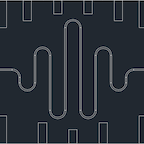Image

Nonlinear response of the vacuum Rabi resonance
Publication Year
2009
Type
Journal Article
Abstract
On the level of single atoms and photons, the coupling between atoms and the electromagnetic field is typically very weak. By employing a cavity to confine the field, the strength of this interaction can be increased many orders of magnitude to a point where it dominates over any dissipative process. This strong-coupling regime of cavity quantum electrodynamics has been reached for real atoms in optical cavities, and for artificial atoms in circuit QED and quantum-dot systems. A signature of strong coupling is the splitting of the cavity transmission peak into a pair of resolvable peaks when a single resonant atom is placed inside the cavity - an effect known as vacuum Rabi splitting. The circuit QED architecture is ideally suited for going beyond this linear response effect. Here, we show that increasing the drive power results in two unique nonlinear features in the transmitted heterodyne signal: the supersplitting of each vacuum Rabi peak into a doublet, and the appearance of additional peaks with the characteristic sqrt(n) spacing of the Jaynes-Cummings ladder. These constitute direct evidence for the coupling between the quantized microwave field and the anharmonic spectrum of a superconducting qubit acting as an artificial atom.
Journal
Nature Physics
Volume
5
Issue
2
Pages
105–109
ISSN Number
17452481
On the level of single atoms and photons, the coupling between atoms and the electromagnetic field is typically very weak. By using a cavity to confine the field, the strength of this interaction can be increased by many orders of magnitude, to a point where it dominates over any dissipative process. This strong-coupling regime of cavity quantum electrodynamics has been reached for real atoms in optical cavities, and for artificial atoms in circuit quantum electrodynamics and quantum dot systems.

